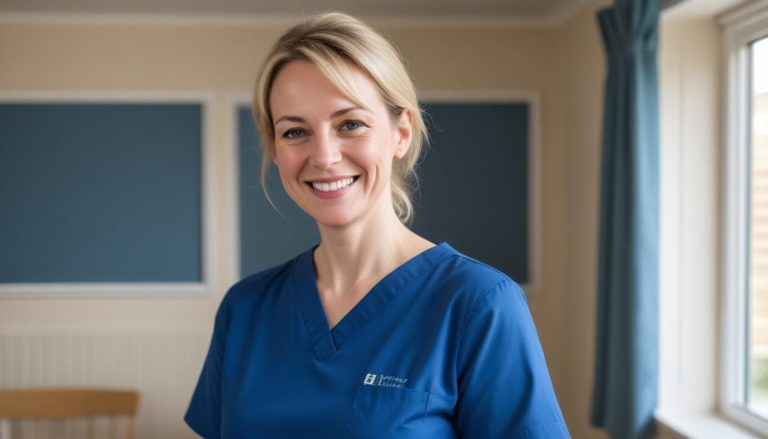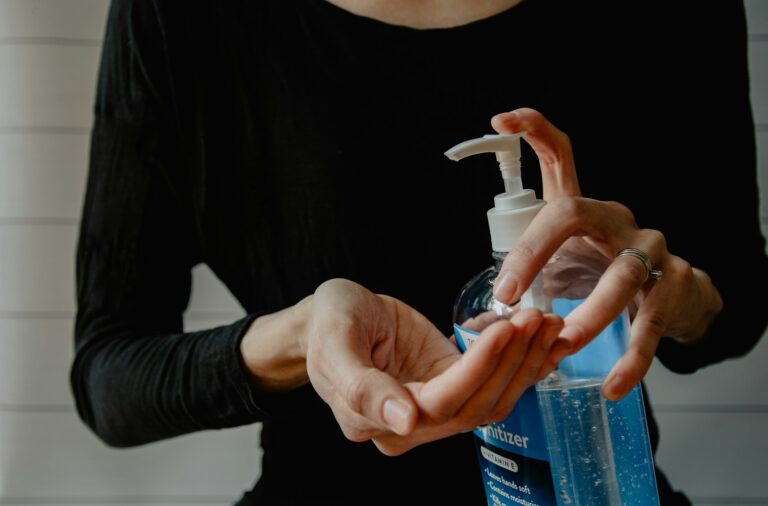A Central Decontamination Unit, or CDU, is a specialist facility. It is found within hospitals and other health and social care settings in the UK. Its primary purpose is to clean, disinfect, and sterilise medical devices and surgical instruments. The CDU ensures reusable equipment is safe for patient care. The staff working here follow strict processes to reduce health risks from contaminated items.
Effective decontamination is necessary in health care. Contaminated instruments can lead to infection or the spread of harmful microorganisms. The CDU supports wider infection control procedures. It is a critical part of patient safety.
What Happens Inside a CDU
The main function of a CDU is to prepare reusable instruments for safe re-use. The tasks carried out are complex and require attention to detail. Trained decontamination staff perform each stage carefully.
The main stages of work inside a CDU include:
- Collection and receipt of used instruments
- Cleaning and disinfection
- Inspection and maintenance
- Packaging and sterilisation
- Storage and distribution
Each stage is equally important. If any step is missed or done incorrectly, patient safety could be compromised.
Receipt and Collection of Instruments
Once medical instruments are used, they are collected from theatres, wards, or clinics. These items might be contaminated with blood, tissue, or body fluids. To reduce the risk of spreading infections, items are transported in secure trays or trolleys. Staff wear protective gloves and follow infection control guidance.
When items arrive at the CDU, they enter through a dedicated “dirty” entrance. This prevents the spread of contamination to clean areas. Used items are logged and checked. Tracking items at every stage ensures nothing goes missing and records are accurate.
Cleaning and Disinfection Process
Cleaning is the first major stage. Staff use either manual cleaning or specialist machines called washer-disinfectors. Manual cleaning involves scrubbing instruments with detergents to remove visible dirt. Machines use water jets and detergents. They clean at high temperatures to kill many microbes. Disinfection further reduces the risk of harmful microorganisms surviving.
After cleaning, staff check instruments visually. If any debris remains, items are cleaned again.
Inspection and Maintenance
Next, staff inspect all items for damage, dirt, or faults. They use magnifiers and bright lighting to find any issues. Manufacturer’s instructions tell staff how to handle each type of instrument. Some tools need lubrication or re-assembly. Others may need extra attention. Staff remove any broken or non-functional items from use. Detailed records are kept for audit purposes.
Packaging for Sterilisation
Sterilisation kills all remaining germs and spores. Before this stage, cleaned items are wrapped or packed in sterile packaging. The package must let steam or vapour penetrate during sterilisation, but also keep items clean after the process.
Labelling is important. Each pack is labelled with date, contents, and a batch number. This information helps with traceability.
Sterilisation Methods
The most common method is steam sterilisation, known as autoclaving. High pressure and steam reach over 134°C. This destroys all bacteria, viruses, and spores.
Other methods include:
- Low temperature sterilisation using hydrogen peroxide gas plasma
- Ethylene oxide gas, for heat-sensitive equipment
- Chemical sterilisation for specific items
Staff choose the method depending on the instrument material and manufacturer’s advice.
Storage and Distribution
After sterilisation, instruments cool and dry in a controlled, clean area. They are stored in closed trolleys or cupboards to stop re-contamination. Staff then deliver sterile packs back to wards, theatres, or clinics. Careful documentation means it is possible to trace every instrument used in patient care.
Infection Control in the CDU
Infection control is a top priority in the CDU. Staff follow strict rules called Standard Infection Control Precautions (SICPs). These rules limit the risks of contamination and infection. They include:
- Wearing gloves, aprons, and sometimes masks or eyewear
- Washing hands frequently
- Separating clean and dirty areas
- Disposing of contaminated waste safely
- Regular cleaning of work surfaces and equipment
Monitoring is thorough. Supervisors check processes daily. External auditors may visit to check standards.
Staff Roles and Training
The CDU is only as good as the people working there. All staff need expert training to do their jobs well. Their main roles include:
- Decontamination Technicians – undertake cleaning, assembly, and sterilisation
- Supervisors – supervise workflow, maintain standards, and support infection control
- Maintenance Engineers – keep machines and equipment working safely
- Administrative Staff – manage records, stock, and orders
Training covers equipment use, infection control, traceability, and health and safety. Staff must keep their training up to date.
The Importance of Record-Keeping
Detailed records are kept for every item processed. These records show:
- What was decontaminated, and when
- Which steriliser processed the item
- Results of sterilisation tests
- Batch codes and tracking numbers
- Any faults or problems found and actions taken
This supports patient safety, as it allows investigation if someone develops an infection. Auditors, inspectors, and regulatory bodies may check records.
Regulations and Quality Standards
CDUs must meet strict standards set by UK and international bodies. Regulations ensure patient safety and maintain confidence in NHS and private health care. Important standards and legislation include:
- Health and Social Care Act 2008 (Regulated Activities) Regulations 2014
- Medical Devices Regulations 2002 (as updated)
- BS EN ISO 13485 – Quality management for medical devices
- HTM 01-01 and HTM 01-06 – Department of Health guidance on decontamination
- Care Quality Commission (CQC) inspection requirements
CDUs may be accredited to industry standards. Inspections and audits test compliance.
Importance of a CDU in Health and Social Care
Every year, millions of procedures use reusable instruments. If even one is contaminated, patient safety is at risk. Infections can cause suffering, increased hospital stays, or even death.
A well-run CDU:
- Stops infections spreading between patients
- Protects staff and patients
- Prolongs the life of expensive equipment
- Provides assurance that high standards are maintained
- Complies with the law
It removes a significant barrier to safe surgeries, diagnostics, or routine care.
How CDUs Link with Other Services
The CDU supports many other departments. It works closely with:
- Operating theatres – providing sterile instruments for surgery
- Outpatient clinics – supplying sterile packs for examinations
- Dental and endoscopy units – cleaning and sterilising specialist tools
- Community services – enabling safe reuse of equipment
Communication is constant. Timely delivery of processed items supports patient care.
Typical Layout of a CDU
The design of a CDU prevents cross-contamination. It is divided into zones:
- Dirty Area: Receives used items, initial cleaning takes place.
- Clean Area: Cleaned instruments are inspected and packed.
- Sterile Area: Sterilised items are stored and distributed.
Doors, airflows, and staff movement patterns are planned to stop dirty and clean areas mixing. Equipment and staff are separated between zones.
Quality Monitoring and Assurance
Quality checks support safety. Routine monitoring includes:
- Physical tests on steam sterilisers
- Chemical indicators placed in every batch
- Biological spore tests for extra assurance
- Audit trails linking each pack to its processing cycle
- Regular maintenance and calibration of machines
Any failures are recorded and investigated. Calibration is carried out by specialists, and all issues are logged promptly.
Dealing with Problems and Risks
Sometimes errors or issues occur:
- Instruments may not be fully cleaned
- Sterilisation cycles can fail
- Packaging can be torn or punctured
- Supplies may run low
CDU staff must report and record these issues. Processes are stopped, and potentially affected items are quarantined. Investigations identify the cause, and extra staff training might be needed. Health care staff in theatres or wards are promptly notified if a risk arises so that patient safety is protected.
Sustainability and Environmental Considerations
Modern CDUs aim to reduce environmental impact. Actions include:
- Using efficient washers and sterilisers to cut water and energy use
- Recycling packaging wherever possible
- Disposing of waste following environmental guidance
- Choosing detergents and disinfectants with lower toxicity
All actions must balance infection control with environmental responsibility.
Professional Standards and Teamworking
Respect among team members is necessary. Communication between staff in the CDU and front-line healthcare workers is open and clear. Errors or poor practice are never ignored. Supervisors promote a culture of safety and honesty.
Respect for privacy and dignity extends even to how items are handled. For example, equipment from infection cases might be prioritised and processed with extra care.
Continuous Improvements and Innovation
CDUs learn from new research and updated guidance. Staff review processes regularly, attend training, and share knowledge. New equipment and digital tracking systems make record-keeping more accurate. They also help trace recalls if required.
Feedback from users, such as surgeons or nurses, is valued. It helps the CDU meet the actual needs of the wider health and social care team.
Final Thoughts
A Central Decontamination Unit is a specialised facility in hospitals and health care settings. Its work is vital for patient safety and infection control. Without the CDU, safe surgeries and routine care would not be possible. Every stage – from collection to sterilisation to distribution – is subject to strict rules, checks, and records. Expert staff, modern technology, and a culture of quality help the CDU deliver safe, effective decontamination for all reusable medical equipment. Staff in every area of health and social care depend on their skill and reliability.
Subscribe to Newsletter
Get the latest news and updates from Care Learning and be first to know about our free courses when they launch.







